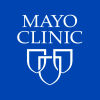预约演示
更新于:2025-08-26
I-123 metaiodobenzylguanidine
更新于:2025-08-26
概要
基本信息
非在研机构- |
权益机构- |
最高研发阶段临床阶段不明 |
首次获批日期- |
最高研发阶段(中国)- |
特殊审评- |
关联
4
项与 I-123 metaiodobenzylguanidine 相关的临床试验NCT01522378
Cardiac Resynchronization and MIBG Imaging
Subjects were recruited if their healthcare provider decided that they needed treatment with a special Internal Cardiac Defibrillator (ICD) called a biventricular ICD. The investigators did this study to see if part of the nerve organ, called the sympathetic nervous system, may be responsible for the improvement seen in patients that receive biventricular pacing. The investigators had three ways to measure sympathetic nervous activity: 1) by using a special blood sample, 2) by monitoring heart rhythm, and 3) by performing a special heart scan.
开始日期2012-02-01 |
申办/合作机构  Mayo Clinic Mayo Clinic [+1] |
NCT01250912
Three Dimension Neuron Imaging Using 123I-metaiodobenzylguanidine Single Photon Emission Computed Tomography to Guide Ventricular Tachycardia Ablations
Some patients are at risk for life-threatening fast heart rates. These can frequently be treated by using a catheter inside the heart to burn away the cells that create the fast heart rates. The purpose of this study is to image the nerves inside the heart of those patients. The investigators want to find out if abnormalities in the nervous system in the heart can help the physician to find the area that needs to be burnt away.
开始日期2010-03-01 |
申办/合作机构 |
NCT00389766
International Phase II Studies of I-mIBG in Combination With Topotecan and Peripheral Blood Stem Cell Rescue for (A) Primary Resistant High Risk Neuroblastoma and (B) Relapsed Stage 4 Neuroblastoma
RATIONALE: Radioisotope therapy, such as iodine I 131 metaiodobenzylguanidine (MIBG), releases radiation that kills tumor cells. Drugs used in chemotherapy, such as topotecan, work in different ways to stop the growth of tumor cells, either by killing the cells or by stopping them from dividing. Topotecan may also make tumor cells more sensitive to iodine I 131 MIBG. A peripheral stem cell transplant may be able to replace blood-forming cells that were destroyed by iodine I 131 MIBG and topotecan. This may allow more iodine I 131 MIBG and topotecan to be given so that more tumor cells are killed.
PURPOSE: This phase II trial is studying how well giving high-dose iodine I 131 MIBG together with topotecan and peripheral stem cell transplant works in treating young patients with relapsed stage 4 neuroblastoma or primary resistant high-risk neuroblastoma.
PURPOSE: This phase II trial is studying how well giving high-dose iodine I 131 MIBG together with topotecan and peripheral stem cell transplant works in treating young patients with relapsed stage 4 neuroblastoma or primary resistant high-risk neuroblastoma.
开始日期2008-07-01 |
申办/合作机构- |
100 项与 I-123 metaiodobenzylguanidine 相关的临床结果
登录后查看更多信息
100 项与 I-123 metaiodobenzylguanidine 相关的转化医学
登录后查看更多信息
100 项与 I-123 metaiodobenzylguanidine 相关的专利(医药)
登录后查看更多信息
15
项与 I-123 metaiodobenzylguanidine 相关的文献(医药)2025-08-01·Quantitative Imaging in Medicine and Surgery
Clinical value of 123I-metaiodobenzylguanidine single-photon emission computed tomography/computed tomography in spontaneous regression of localized congenital neuroblastoma: an evaluative study
Article
作者: Zhou, Ziang ; Zhang, Keyu ; Wang, Wei ; Wang, Guanyun ; Wang, Xiaoya ; Kan, Ying ; Yang, Jigang
Background:
Congenital neuroblastoma represents an early-onset form of neuroblastoma. This study aims to evaluate the imaging features of 123I-metaiodobenzylguanidine (123I-MIBG) single-photon emission computed tomography (SPECT)/computed tomography (CT) and their correlation with the clinical characteristics of localized congenital neuroblastoma.
Methods:
We retrospectively collected imaging and clinical data from congenital neuroblastoma patients who underwent 123I-MIBG SPECT/CT. The volumes of interest of primary lesion, muscle, lung and mediastinum blood pool were delineated by 3DSlicer. The ratios of the maximum and average counts between the tumor and muscle/lung/mediastinum blood pool were calculated to explore the factors related to the spontaneous regression of the tumor.
Results:
A total of 11 patients with localized congenital neuroblastoma were included in this study. The majority of the lesions were identified prenatally. 123I-MIBG imaging demonstrated that all of the spontaneous regressed lesions were localized neuroblastoma, which did not cross the midline and were negative for image-defined risk factors, with a maximum diameter of less than 3.1 cm. The 123I-MIBG uptake in the tumor was significantly associated with spontaneous regression of neuroblastoma. Lower 123I-MIBG uptake in the tumor is associated with spontaneous tumor regression of neuroblastoma.
Conclusions:
123I-MIBG SPECT/CT is a valuable tool for the diagnosis, staging and monitoring of treatment response in congenital neuroblastoma. The 123I-MIBG uptake of the tumor can predict the spontaneous regression in localized congenital neuroblastoma.
2021-04-01·Journal of nuclear cardiology : official publication of the American Society of Nuclear Cardiology3区 · 医学
Cardio-pulmonary involvement in pulmonary arterial hypertension: A perfusion and innervation scintigraphic evaluation
3区 · 医学
Article
作者: Formichi, Bruno ; Gimelli, Alessia ; Marzullo, Paolo ; Monti, Simonetta ; Pugliese, Nicola Riccardo ; Airò, Edoardo ; Bauleo, Carolina ; Prediletto, Renato ; Bertasi, Michelangelo
BACKGROUND:
Pulmonary arterial hypertension (PAH) is characterized by the right ventricle (RV) remodeling and pulmonary endothelial dysfunction. We studied cardiac perfusion and innervation in PAH with a cadmium-zinc-telluride (CZT) scanner and lung uptake impairment of 123I-metaiodobenzylguanidine (123I-MIBG).
METHODS:
In 13 patients with newly diagnosed PAH and 11 dilated cardiomyopathies (DCM, for comparative purposes), we assessed early and delayed 123I-MIBG uptake ratios of lung-to-mediastinum (L/M) and heart-to-mediastinum (H/M) on anterior planar images. A quantitative myocardial innervation with 123I-MIBG and perfusion with 99mTc-tetrofosmin using CZT-SPECT was performed. All patients underwent right heart catheterization.
RESULTS:
Early and delayed L/M ratios in PAH were lower than DCM (1.47 ± 0.14 vs 1.98 ± 0.11 and 1.40 ± 0.13 vs 1.83 ± 0.09; P < .001), while early and delayed H/M were impaired but not different (1.73 ± 0.20 vs 1.65 ± 0.18 and 1.73 ± 0.27 vs 1.58 ± 0.19). RV perfusion and early innervation were significantly higher in PAH compared to DCM (68.4 ± 13.4 vs 28.6 ± 4.1 and 58.8 ± 9.3 vs 27 ± 2.2; P < .001); delayed RV innervation was not evaluable. RV/LV perfusion and innervation ratios were significantly related (R = 0.74; P < .0001) and had a significant correlation with clinical, hemodynamic, and morpho-functional parameters, including L/M ratios.
CONCLUSION:
Cardio-pulmonary scintigraphy through a perfusion and innervation study is feasible and may identify pulmonary vascular and RV remodeling, as in PAH.
2020-10-01·Journal of nuclear cardiology : official publication of the American Society of Nuclear Cardiology
Cardiac innervation imaging as a risk stratification tool for potential device therapy candidates
Communications
作者: Werner, Rudolf A
As a scintigraphic approach evaluating cardiac nerve integrity, 123I-metaiodobenzylguanidine (123I-mIBG) has been recently Food and Drug Administration approved. A great deal of progress has been made by the prospective ADMIRE-HF trial, which primarily demonstrated the association of denervated myocardium assessed by 123I-mIBG and cardiac events. However, apart from risk stratification, myocardial nerve function evaluated by molecular imaging should also be expanded to other clinical contexts, in particular to guide the referring cardiologist in selecting appropriate candidates for specific therapeutic interventions. In the present issue of the Journal of Nuclear Cardiology®, the use of 123I-mIBG for identifying cardiomyopathy patients, which would most likely not benefit from ICD due to low risk of arrhythmias, is described. If we aim to deliver on the promise of cardiac innervation imaging as a powerful tool for risk stratification in a manner similar to nuclear oncology, studies such as the one reviewed here may imply an important step to lay the proper groundwork for a more widespread adoption in clinical practice.
100 项与 I-123 metaiodobenzylguanidine 相关的药物交易
登录后查看更多信息
研发状态
10 条进展最快的记录, 后查看更多信息
登录
| 适应症 | 最高研发状态 | 国家/地区 | 公司 | 日期 |
|---|---|---|---|---|
| 慢性心力衰竭 | 临床阶段不明 | 日本 | 2015-03-17 |
登录后查看更多信息
临床结果
临床结果
适应症
分期
评价
查看全部结果
| 研究 | 分期 | 人群特征 | 评价人数 | 分组 | 结果 | 评价 | 发布日期 |
|---|
No Data | |||||||
登录后查看更多信息
转化医学
使用我们的转化医学数据加速您的研究。
登录
或

药物交易
使用我们的药物交易数据加速您的研究。
登录
或

核心专利
使用我们的核心专利数据促进您的研究。
登录
或

临床分析
紧跟全球注册中心的最新临床试验。
登录
或

批准
利用最新的监管批准信息加速您的研究。
登录
或

特殊审评
只需点击几下即可了解关键药物信息。
登录
或

生物医药百科问答
全新生物医药AI Agent 覆盖科研全链路,让突破性发现快人一步
立即开始免费试用!
智慧芽新药情报库是智慧芽专为生命科学人士构建的基于AI的创新药情报平台,助您全方位提升您的研发与决策效率。
立即开始数据试用!
智慧芽新药库数据也通过智慧芽数据服务平台,以API或者数据包形式对外开放,助您更加充分利用智慧芽新药情报信息。
生物序列数据库
生物药研发创新
免费使用
化学结构数据库
小分子化药研发创新
免费使用

